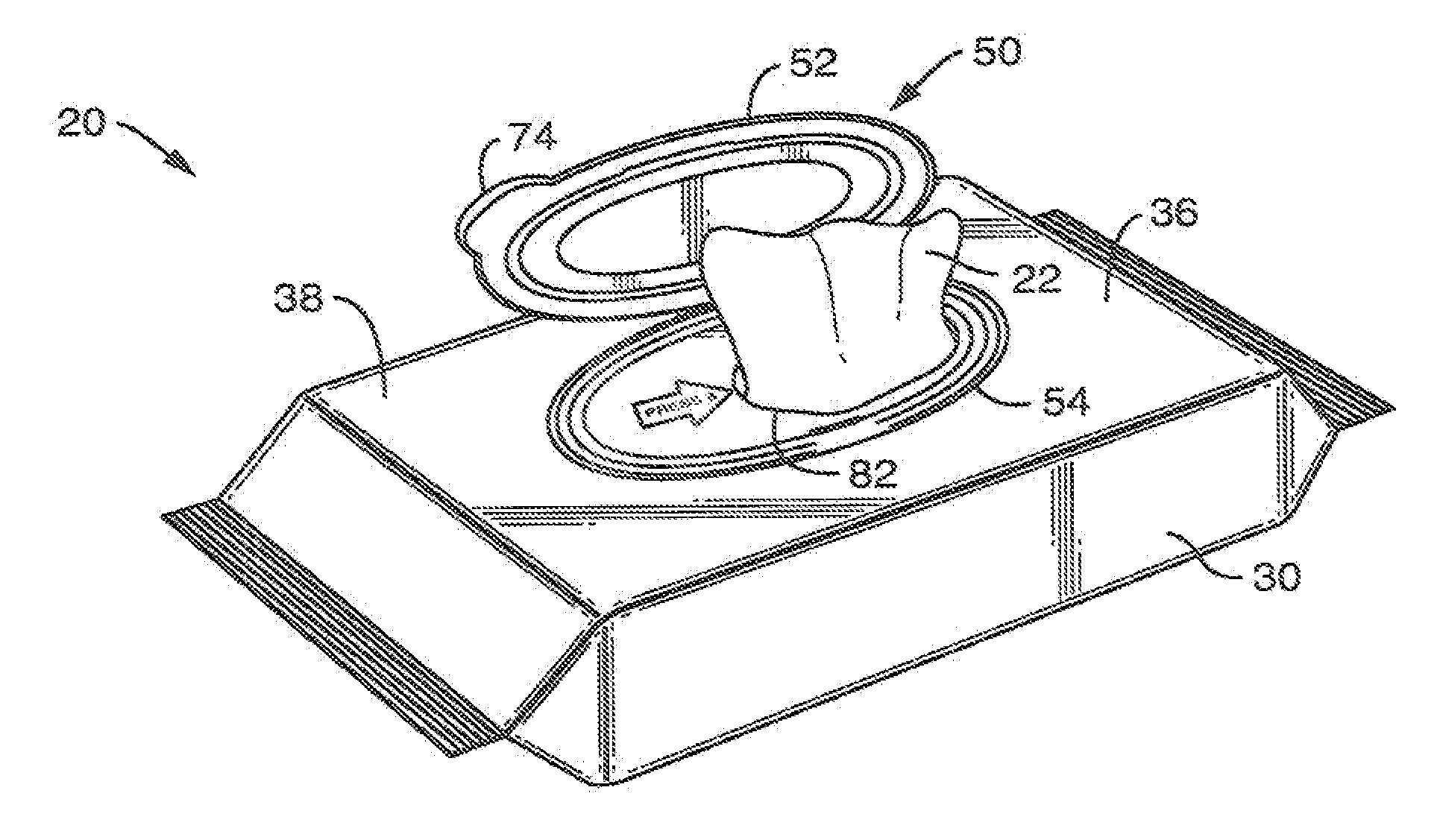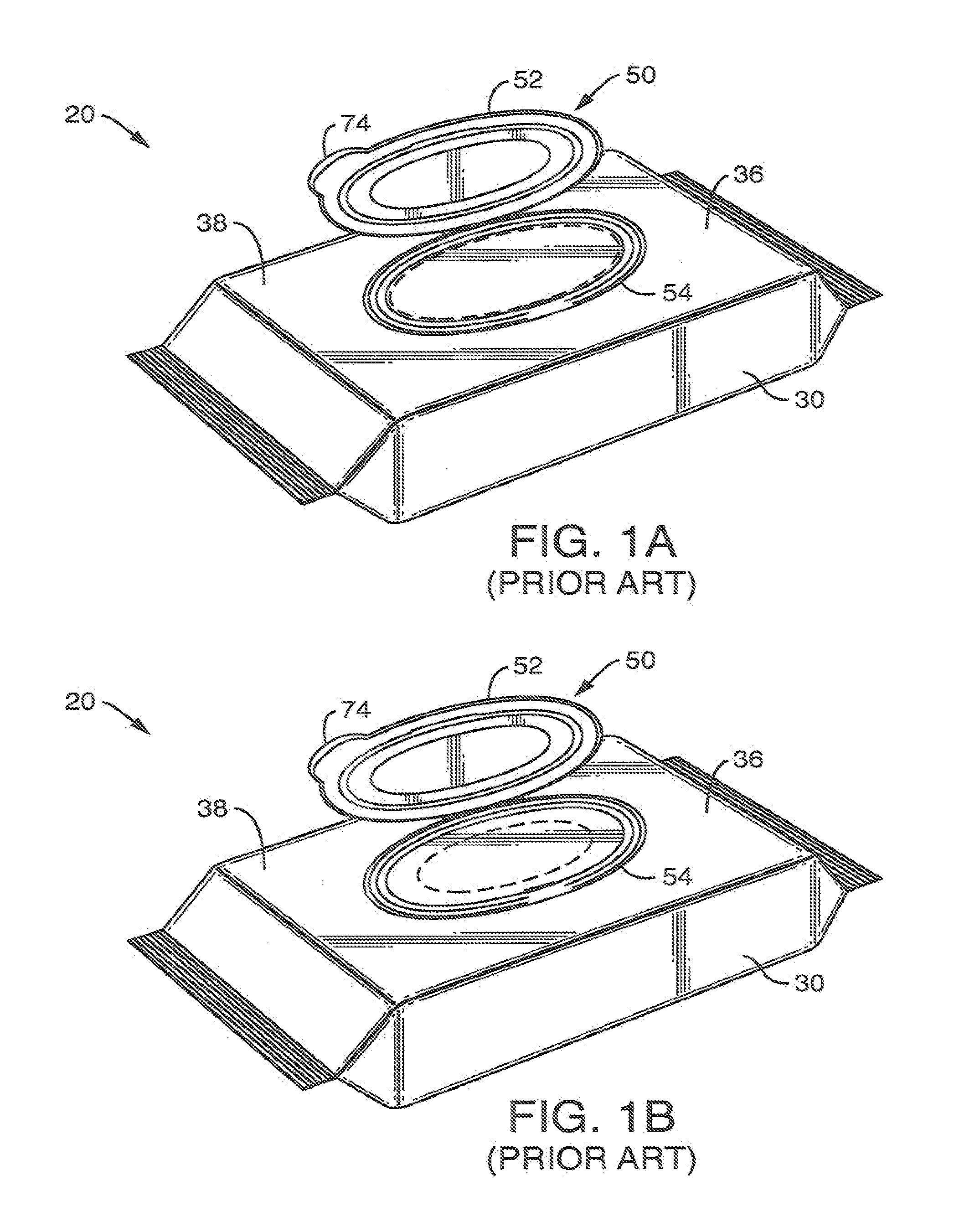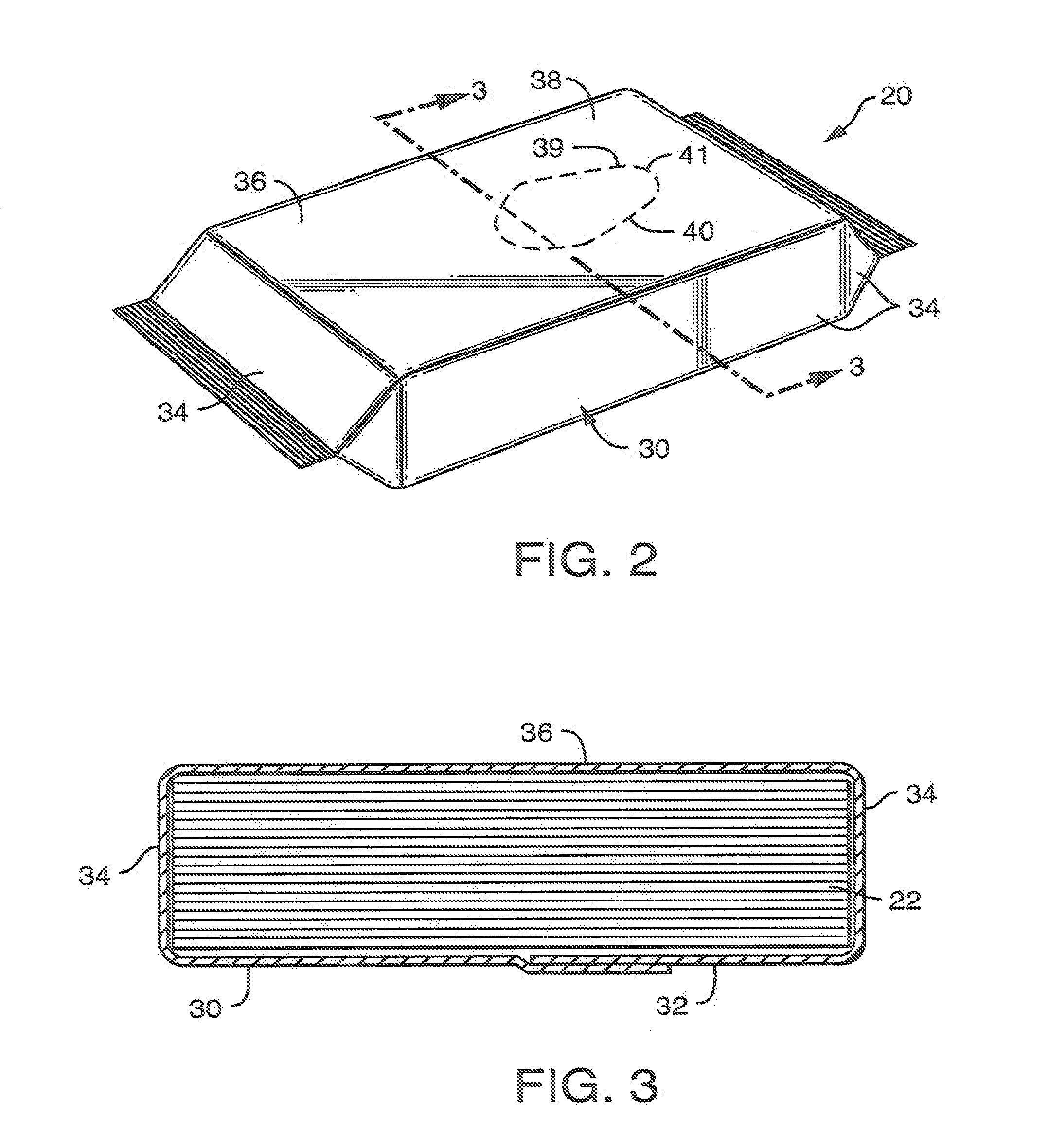Storing And Dispensing Container For Product Having Improved Dispensing Orifice
a technology of product orifice and storage container, which is applied in the direction of flat article dispensing, thin material handling, packaging, etc., can solve the problems of failure to wipe, failure to wipe, and insufficient holding of dispensing orifice,
- Summary
- Abstract
- Description
- Claims
- Application Information
AI Technical Summary
Benefits of technology
Problems solved by technology
Method used
Image
Examples
Embodiment Construction
[0039]As used herein, “flexible” means a non-foamed polymeric containing film with a thickness of about 250 micrometers or less or a foamed polymeric containing film with a thickness of about 2000 micrometers or less.
[0040]As used herein, “rigid” means a level of stiffness commonly associated with materials used to manufacture wet wipes tubs of parts thereof. Numerically, these materials typically have a flexural modulus (as measured in accordance with ASTM D790 “Standard Test Method for Flexural Properties of Unreinforced and Reinforced Plastics and Electrical Insulating Materials”) of about 100 Newtons per square millimeter or greater, more specifically from about 1100 to about 1550 Newtons per square millimeter.
[0041]The present invention is directed at solving problems related to storing and dispensing product such as wipes and wet wipes from containers, and to solving problems related to the initial opening of such containers. As representatively illustrated throughout FIGS. 2-...
PUM
| Property | Measurement | Unit |
|---|---|---|
| length | aaaaa | aaaaa |
| length | aaaaa | aaaaa |
| width | aaaaa | aaaaa |
Abstract
Description
Claims
Application Information
 Login to View More
Login to View More - Generate Ideas
- Intellectual Property
- Life Sciences
- Materials
- Tech Scout
- Unparalleled Data Quality
- Higher Quality Content
- 60% Fewer Hallucinations
Browse by: Latest US Patents, China's latest patents, Technical Efficacy Thesaurus, Application Domain, Technology Topic, Popular Technical Reports.
© 2025 PatSnap. All rights reserved.Legal|Privacy policy|Modern Slavery Act Transparency Statement|Sitemap|About US| Contact US: help@patsnap.com



